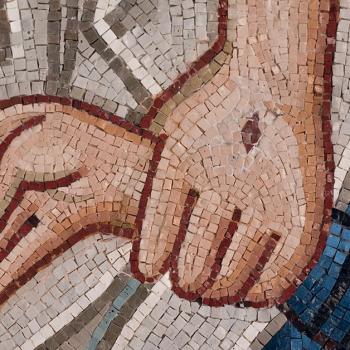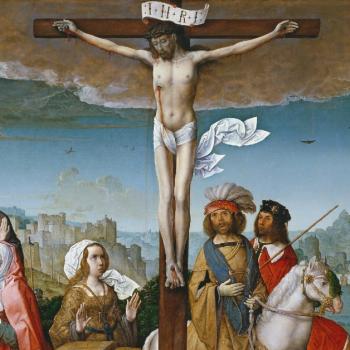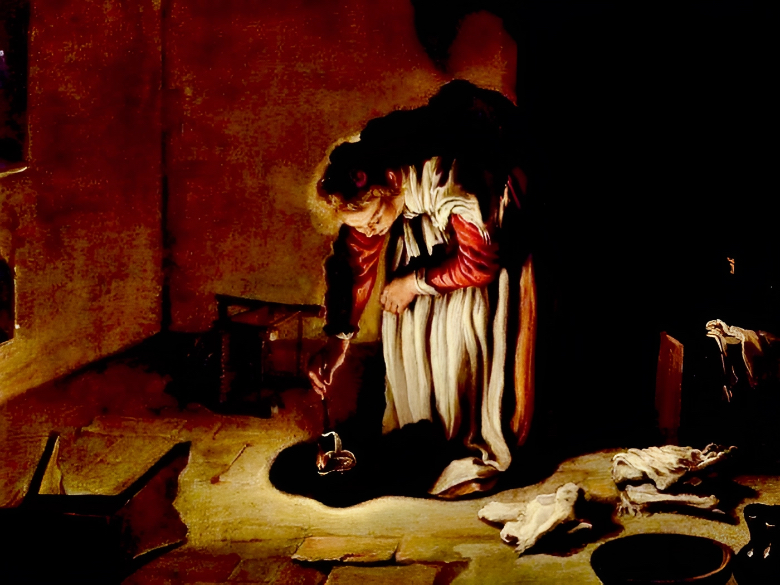
Many Christians underestimate the theological significance of Jesus’ Lost Coin parable, leading them to overlook its radical perspective of how God’s relationship with humanity intersects with our redemption.
The parable has always fascinated me.
Unlike it’s more famous scriptural predecessor, the parable of the Lost Sheep, recounted in both the gospels of Matthew and Luke, and it’s poorly titled Lukan successor, the Prodigal Son, this short and sweet analogy is often critically evaluated as a theological afterthought. In this way, it has suffered a kind of middle-child syndrome because few Christians (even theologians) consider it’s unique implications, and simply see it contextually as a supportive/redundant chapter in the midst of a trilogy of “lost” parables; a similitude.
The Audience…
The original intended hearers of the parable were an eclectic gathering of Jesus’s disciples, Pharisees, expert teachers of the law, tax collectors, and others variously described in preceding text as a crowd of “followers” and “sinners.”
Jesus had gone to eat at the house of a prominent Pharisee on the Sabbath, and a coterie of individuals the religious leaders considered undesirable made themselves at home by surrounding Jesus at the table. This timing was precipitous, because apparently his invitation had been arranged so he could be “carefully watched.” As the other guests fussed about the prominence of their place at the table, Jesus began telling a series of parables illustrating who will actually enter God’s kingdom and the cost of discipleship.
But the more religious contingent at the feast were grumbling, paying more attention to how Jesus welcomed sinners and was eating with them. The complainers obviously had missed the point of the very parables Jesus had just told them about how the people most desired at God’s table were not those with engraved invitations, but the ones who came in off the street, leaving behind everything to taste the banquet. The tales Jesus had presciently told in his parables quickly became literal in the moment.

And that’s when Jesus began the pericope of the “lost” parables: the Lost Sheep, followed by the Lost Coin, and then the Lost/Prodigal Son.
By the time Jesus used the Lost Coin to speak so those hearing would understand, the narrative portrayed by scripture divided the diverse group of listeners into two essential camps. On one side were religious experts who were intertwined significantly with the business of the Temple, along with their acolytes. These individuals either possessed the means to host who’s who gatherings like the one that day, or were naturally invited to such events. On the other side was Jesus and his nomadic rabble of ragtag followers, which included fishermen, tax collectors, and other crowds of people some considered “sinners.”
Significantly, the stark contrast between these two people groups wasn’t simply religious observance, but socio-economic status as well.
…Hears the Story
Jesus marked the difference between the two audiences by inviting them to assume the perspective of a woman for whom a single coin was both one-tenth of her liquid assets and vastly important.
Here is the parable itself:
“…Imagine a woman with ten silver coins: if she realizes that one of them is missing, wouldn’t she light a lamp, sweep her entire house, and carefully search every corner until she discovers it? And when she does find it, of course she would call together her friends and neighbors and exclaim, ‘Rejoice with me, for I’ve found the coin that I’d lost!’ So, I’m telling you, this is how one sinner repenting is celebrated in the presence of God’s angels.” (Luke 15:8-10, author’s translation)
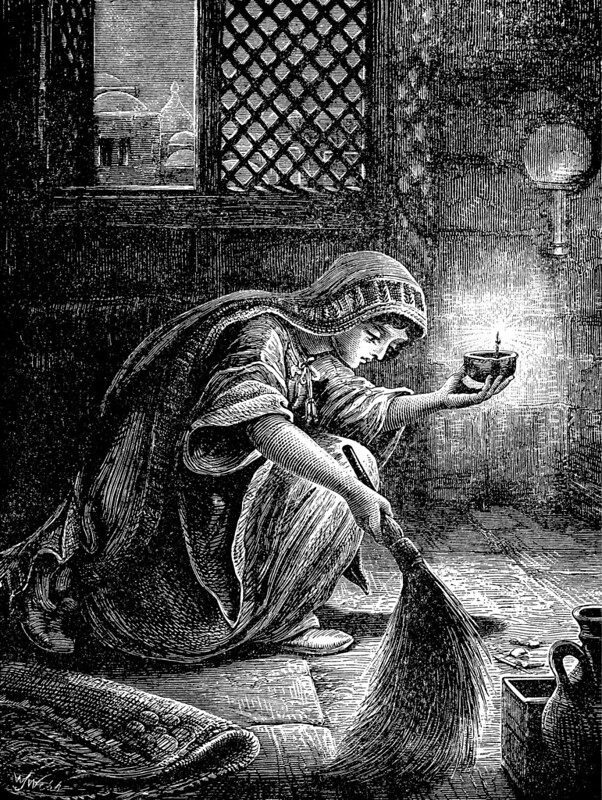
Now, the religious experts and the Pharisee hosting Jesus at the meal would have likely experienced great difficulty empathizing with this fictional woman, who besides being poor, by sake of her gender would have been considered socially insignificant.
But the people who were following Jesus around, the ones the whiny religious elite labeled “sinners,” could surely identify with those rejected by the rich and powerful in society; they could understand a person whose few coins were precious because it was all she had.
Significantly, Jesus wasn’t simply telling the story of just any poor person, he was asking his listeners to consider the plight of one who was marginalized in and by society.
…About the Woman
In 1st-century Galilee, women faced pervasive challenges that undervalued their roles and restricted their opportunities.
Synagogue worship and religious education were exclusively male domains, resulting in limited religious participation and actual segregation for women. Societal discouragement against females receiving formal education perpetuated a cycle of restricted access to knowledge and skills and further hindered their independence.
Women found themselves primarily responsible for domestic duties like managing households, caring for children, and engaging in family-related tasks. While these roles were crucial, they overshadowed any other potential contributions women could make to society during that time.

Because women had no legal rights, they had zero agency in matters such divorce or inheritance, rendering them entirely dependent on men. Unmarried or childless women were ostracized within their communities, and this discrimination permeated every aspect of their lives.
The few New Testament examples of economic activity among women such as Lydia selling purple goods and female followers of Jesus financially supporting his ministry are the proverbial exceptions to simple statistics: in that time and place, 9 out of 10 people lived below the poverty line.
Although there were surely female beggars, none are ever documented historically, or even referenced in passing. Therefore, a woman such as Jesus described in the parable would have had virtually no resource to earn money.
…Who Loses the Coin
What many English translations render as “silver coin” was more technically a drachma, which was a Greek monetary unit that was arguably about the same value as a single day wage for a laborer (though my calculations based on this data suggest it’s value would have been about half of that, but whatever). That means the early 1st century drachma could be worth anywhere from $37 to $75 in 2024 U.S. dollars.
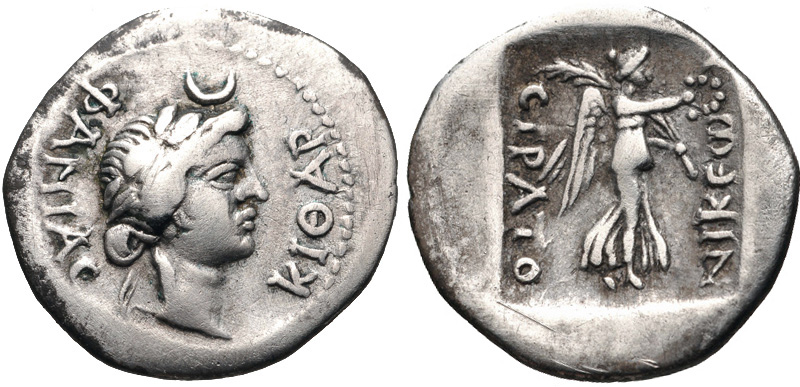
Therefore, for the woman in Jesus’ parable, the lost coin would have been worth our societal equivalent of a tank of gas.
Keep in mind, for someone who a tank of gas was one-tenth of all her money, losing it would have been unthinkable—especially when it was irreplaceable.
Drachmas were somewhat different than the coins you and I are used to, particularly in North America. Specifically, they were “dished,” their shape resembling that of a shallow saucer or bowl. A drachma could not have rolled very far.
In the parable, the woman immediately assumes that the coin is somewhere in the house, which is especially reasonable if there were no other people in the house who would have accessed her money. Because the head of the household in Galilean culture would have undoubtedly been her husband, the small details of the story indicate that the woman lived alone and was responsible for her own survival in every way, further cementing the implication that she was someone who was stigmatized in society.
This not only could have made it easier for some of the male listeners to identify with the woman and her situation, Jesus also structured the narrative of the parable to encourage his listeners to agree with the woman’s approach to find the coin.
While these spare details may seem trite or insignificant, they are not. Because coins do not lose themselves.
Seek and You Will Find
The coin is literally no more or less valuable than any other drachma to anyone else, and some would probably even make the logical argument that a lost coin has zero value because it cannot be used.
But from the woman’s perspective, the value of the coin compelled her to light a lamp and sweep out her house searching high and low to find it. “Rejoice with me, for I’ve found the coin that I’d lost,” was the only words Jesus gave the woman in his parable. The woman actually admitted she was responsible for the coin being lost.
We live in a world not unlike Galilee two millennia ago where religious elitists are often quick to blame the lost—but that isn’t how Jesus asked his listeners to consider others.
Of course, modern readers revert back to their imperfect memory of the preceding parable of the Lost Sheep, ignoring the story of the Lost Coin, and use the analogy of sheep wandering away as an excuse to place blame upon the lost for their plight. But just as with the woman who lost her coin, Jesus began the sheep parable by refusing to blame the lost: “Suppose one of you has a hundred sheep and loses one of them” (Luke 15:4a, NIV).
It could be easy to argue Jesus was metaphorically blaming God for losing sinners, but that is equally obtuse and blame-minded. Rather, Jesus invited those who could hear to identify with a God who takes responsibility finding the lost, who considers the lost to be precious and valuable, and worth saving.
And by all means, it’s interesting how Jesus places the lost in the minority. That the coin was somehow separated from the other nine is never explained, and the parable doesn’t reveal exactly where the coin was found, but because the woman swept the entire house and later found it, it seems as if the coin could have been placed somewhere where dirt had obscured its precise location.

What is perhaps more interesting however is how Jesus asked his audience to empathize with motives of the woman—whose priorities would most likely not have been shared by the financially secure religious leaders craftily observing Jesus while he taught. It’s as if Jesus was attempting to communicate that to treasure the same things as God, one must assume the perspective of one rejected by most other people.
This was Jesus’ answer to the Pharisees and teachers of the law who had muttered aloud complaining about how he included so-called “sinners” at the table. Not only are the marginalized more intrinsically valuable to the kingdom than those whose may be exponentially greater in number, those who are willing to put their hands in the dirt and tirelessly seek after the lost are the ones whose priorities are like God’s.
And if someone is worthy of finding, they are worthy of celebrating, too.
Girls Just Want to Have Fun
The woman in Jesus’ parable rejoices and celebrates that she found her lost coin. But this is a social occasion rather than a private party.
The biblical text of verse 9 which says in part, “…of course she would call together her friends and neighbors and exclaim, ‘Rejoice with me, for I’ve found the coin that I’d lost…” actually reveals something in Koine Greek that is otherwise hidden when translated to English. Although the words “φίλας καὶ γείτονας” (philas kai geitonas) are correctly translated as “friends and neighbors,” φίλας (philas) and γείτονας (geitonas) are feminine nouns.
In other words, Jesus said all the friends and neighbors the woman invited to celebrate her found coin were female.
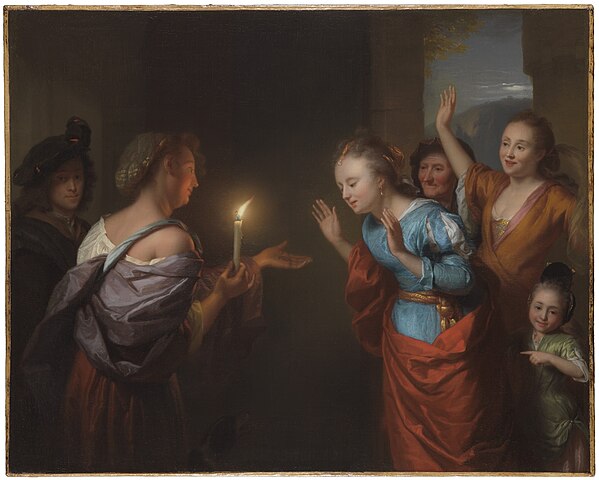
Some could say that such a specification was simply because Jesus had been talking about a woman to begin with, but this is the only example in the New Testament where “friends” or “neighbors” are rendered feminine.
This represents the social network of a lone female in poverty who was rejected by general society. Her friends and neighbors were like her, and although they did not themselves search and find the coin, they were invited to celebrate.
Again, Jesus effortlessly illustrates through the story that God not only celebrates when the lost is found, but that the ones welcome to join in the celebration are those who are also marginalized. The female neighbor whose property adjoins the woman is called upon to rejoice, as are other women who are friends with the one who found her coin.
Continually, those who would be mistreated by the religious leaders at the meal with Jesus are the ones he championed as worthy of affirmation, connection, and even celebration.
We’ve Been Looking for You
Many Fundamentalists have pointed to the last verse of the Lost Coin parable as proof positive “sinners” are conditionally restored to be worthy of celebration because of their repentance. After all, that’s kinda what the verse says, right?
“So, I’m telling you, this is how one sinner repenting is celebrated in the presence of God’s angels.” (Luke 15:10, author’s translation)
Of course that undermines the whole context of the parable, and every detail that Jesus illustrated through storytelling. The entire setting and story concerned the recovery of the sinner, not repentance. And there are theologians who agree with me, and have even speculated that much of verse 10 is an “invention” added to Christ’s original parable for form, theme, and other textual reasons.
But ultimately, that is also beside the point. Jesus was celebrating and teaching others to be his disciples regardless of how “sinful” they were. Their presence at the table may have infuriated some, but for Jesus, he apparently included them not only in the meal, but directed his teaching towards them so they would feel loved, accepted, and appreciated. The proof was in more than just his words, but his actions.
Today, so many in the church are concerned about who does and doesn’t belong. Denominations are splitting over affirmation of the LGBTQ+ community, which itself is no different than the racism that has divided churches in the Unites States for centuries.
It’s easy for people such as myself who care deeply about those who have been traumatized by churches, pastors, and parishioners to swell up and get ready to defend Christlike love by engaging in verbal karate. But Jesus didn’t reject the Pharisees or teachers of the law either; he attempted to teach them, even though they didn’t listen. And he continued eating with the marginalized outcasts, allowing them to join in celebration with him over the protests of his hosts.
So to the Fundamentalists afraid of the LGBTQ+ community you falsely label as sinners infiltrating your church: they are probably already seated among you, only they are courageous enough to reach out to those in their community who don’t have a relationship with Jesus.
To those who like to gaze upon faithful lilly-white faces singing “Holy, Holy, Holy!” in dwindling numbers week upon week: those who have found Jesus with others you have marginalized are likely more than happy to celebrate alongside you at the table with Jesus. It simply hasn’t crossed your mind because you have been busy grumbling about what you perceive to be their sins.
Jesus lovingly taught those closely watching him, who were suspicious of his social network how to celebrate others and accept them in love, fellowship, and discipleship. Writing these words to you is one way I can do the same thing.
Pull up a chair. We’ve been looking for you.










